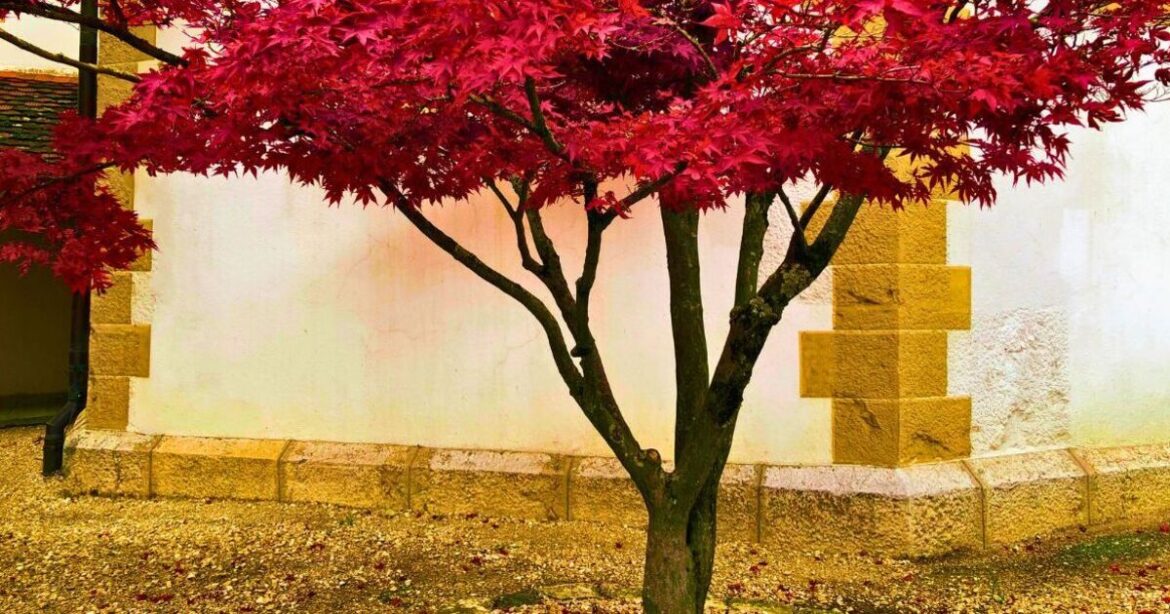Japanese maples are loved for their colourful leaves, but many gardeners do not realise that failing to do one simple thing to the leaves at this time of year can really hurt the tree.
Fallen leaves look stunning and are a good source of nutrients for a garden, but when too many are clumped together, they can create a lot of excess moisture.
Stagnant water around the base of a Japanese maple can suffocate the roots, rot the wood and encourage lots of pests in the soil which can stunt the tree’s growth in the future.
However, the experts at Mr Maple have warned the best reason you need to pick up autumn leaves is that it is a simplest way to prevent diseases like powdery mildew from spreading.
They said: “It is important to keep your Japanese maple tree free of debris and other objects that can harbour moisture. This will help to reduce the chances of powdery mildew developing. Furthermore, regularly cleaning the area around your Japanese maple tree can also reduce the risk of disease.”
Powdery mildew is a fungal disease that looks like white powder on the leaves and tend to affect Japanese maples during wet, cool weather.
Fungal spores can survive on leaves and other wet debris over winter, and once the weather heats up in spring they will be ready to infect any new leaves beginning to grow.
This can leave the leaf buds deformed, stunted and simply much weaker, and makes it more difficult for the tree to store energy to grow other leaves that year.
It makes it more likely the tree will be stressed and patchy, so taking a few minutes to clear up under a Japanese maple is the best way to keep it healthy throughout the rest of late autumn.
How to keep Japanese maples healthy in November
If you notice the leaves underneath your Japanese maple are soggy or sticky then it is best to clean them up otherwise they can help spread fungal spores.
Simple rake them carefully and slowly so you do not damage the shallow roots around the tree, and move any piles away from the tree base.
Make sure to dispose of the leaves properly by putting them in the bin and do not place them in compost, otherwise you risk infecting the rest of your garden.
It is also important to keep an eye on the soil moisture around your Japanese maple and you check it regularly to make sure it is not too wet or too dry.
You can also remove any dead, damage or crossing branches on your Japanese maple as they can prevent air circulating around the tree, but it is important to avoid any heavy pruning before winter.
However, simply taking the time to monitor the tree is the simplest way to keep it clean and disease-free, and if you notice any powder on tree then you can buy a fungicide or consult your local gardening centre on what to do next.


AloJapan.com